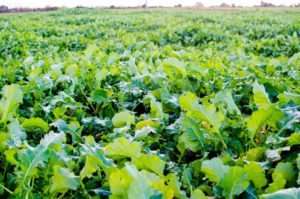Finishing Lambs On Kale Silage
8 October 2018 Ensiled kale can be used as a home-grown protein supplement for finishing housed cattle and sheep. By ensiling kale this can increase the utilisation of the crop compared to grazing in situ, in addition to improving the cleanliness of the stock, which may be comprised by weather conditions.
Ensiled kale can be used as a home-grown protein supplement for finishing housed cattle and sheep. By ensiling kale this can increase the utilisation of the crop compared to grazing in situ, in addition to improving the cleanliness of the stock, which may be comprised by weather conditions.
A study by Marley et al. (2007) reported that relative to medium feed value grass silage, ensiled kale boosted live weight gain of finishing lambs. This study showed lambs on kale silage achieved a live weight gain of 100g/day, compared to 36 g/day on ryegrass silage. They also found that nitrogen was utilised significantly more efficiently in growing lambs fed kale silage compared to red clover, lucerne and ryegrass, therefore less is wasted. This may be in part due to the high fermentable energy content of kale and the presence of readily fermentable sugars, allowing the bugs to utilise degradable N from the kale silage. A similar study by Vipond et al. (1998) showed finishing lambs on kale silage had a similar live weight gain to those fed on grass silage. However, they did find an improved killing-out percentage of lambs fed on a kale silage based ration.
The most notable difference between these studies is the quality of the silage used for comparison. The grass silage used by Vipond et al. (1998) was both higher in metabolisable energy and crude protein then that used in Marley et al. (2007) study. Therefore, if feeding kale silage that has been conserved well and is rationed according to analysis, lambs can achieve similar performance as they would finished on high quality grass silage.
Mary McDowell, mary.mcdowell@sac.co.uk
Sign up to the FAS newsletter
Receive updates on news, events and publications from Scotland’s Farm Advisory Service
